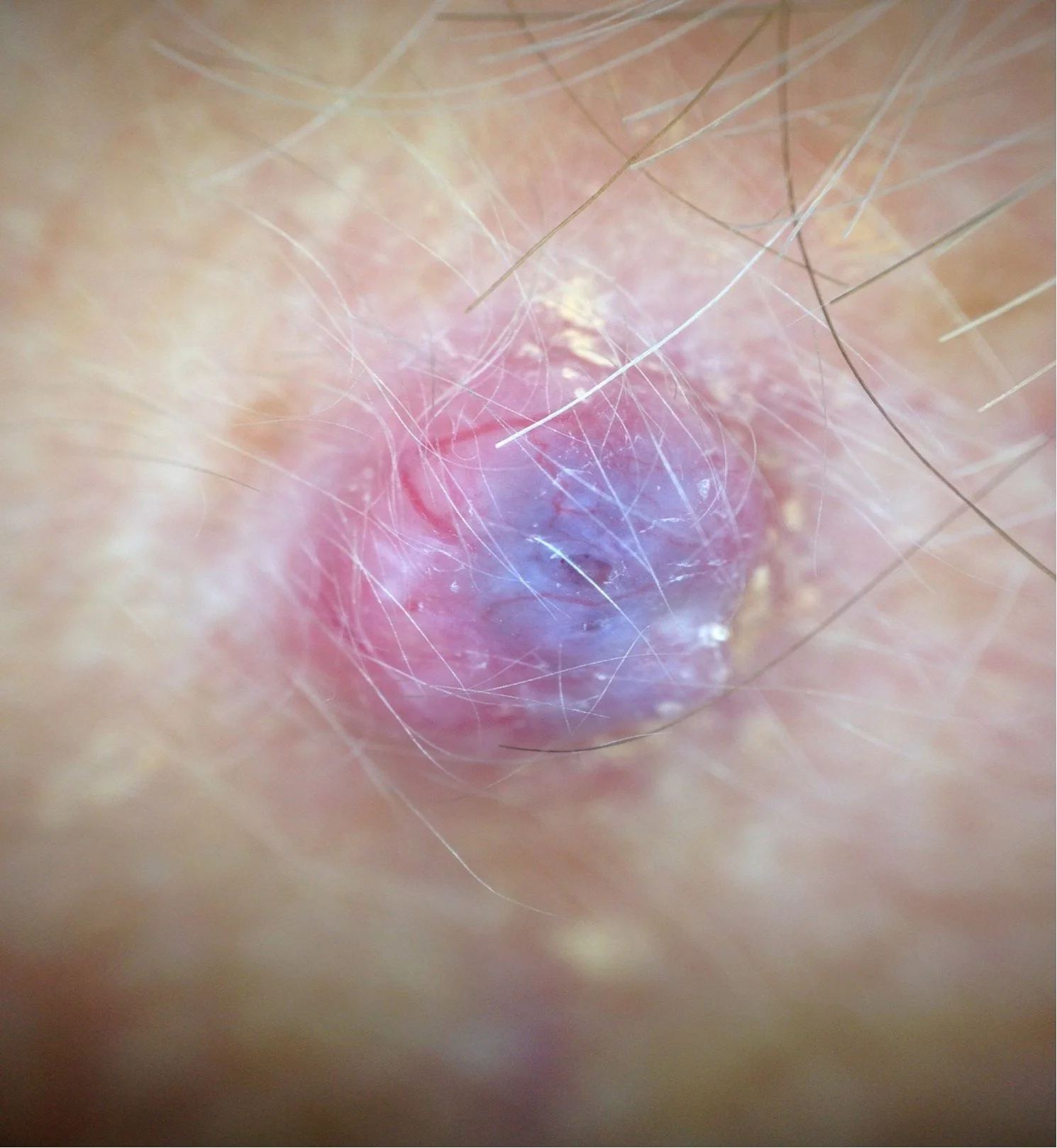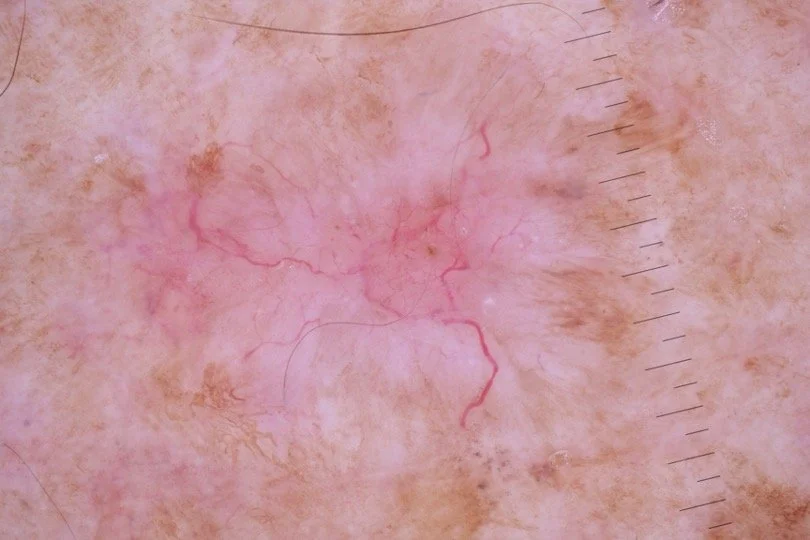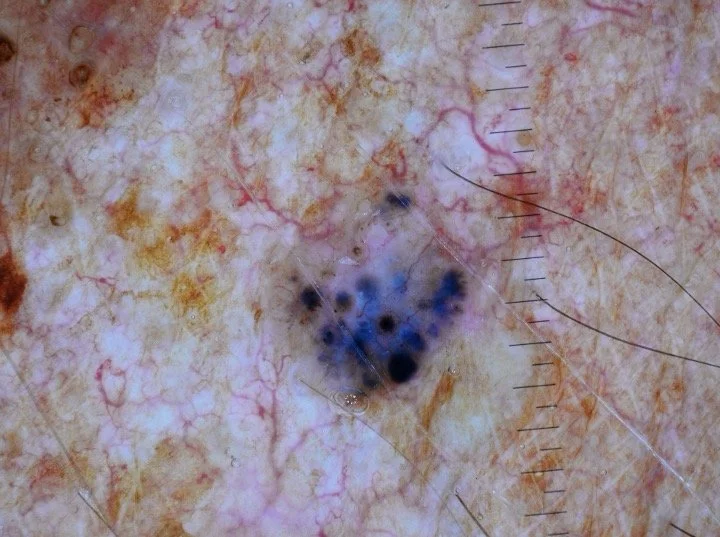Basal Cell Carcinoma
Basal cell carcinoma (BCC) is the most common type of skin cancer, arising from the basal cells in the epidermis, the skin’s outer layer. BCC usually develops in areas exposed to the sun, such as the face, neck, and arms. It tends to grow slowly and rarely spreads to other parts of the body, but if left untreated, it can cause significant local damage. The main risk factors for BCC include prolonged exposure to ultraviolet (UV) radiation from the sun or tanning beds, fair skin, older age, and a history of frequent sunburns. While it is not usually life-threatening, early detection and treatment are essential to prevent complications.
Clinically, basal cell carcinoma often appears as a pearly or waxy bump, a flat, flesh-colored lesion, or a scar-like area with irregular borders. These growths may bleed, ooze, or develop crusts over time. The primary form of treatment for BCC is surgical excision. Occasionally other modalities such as cryotherapy, topical medications, and curette and cautery can be performed. The prognosis for patients with BCC is generally excellent, especially when caught early. Preventative measures, such as regular use of sunscreen, protective clothing, and avoiding excessive sun exposure, can significantly reduce the risk of developing BCC


